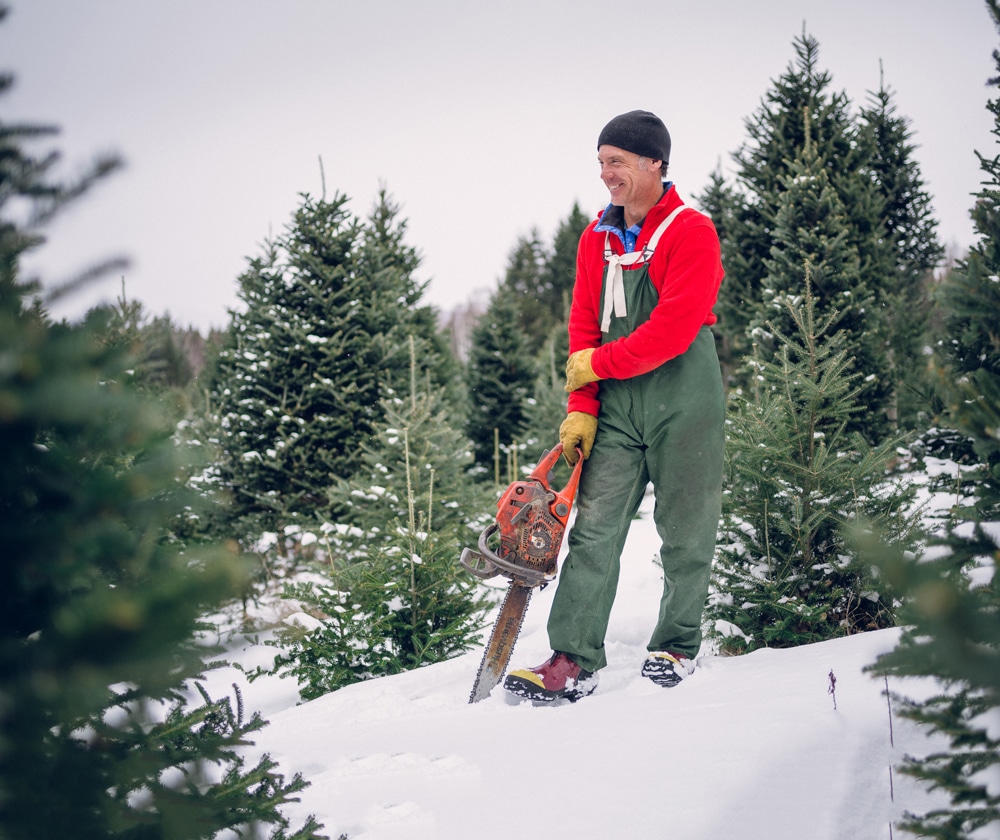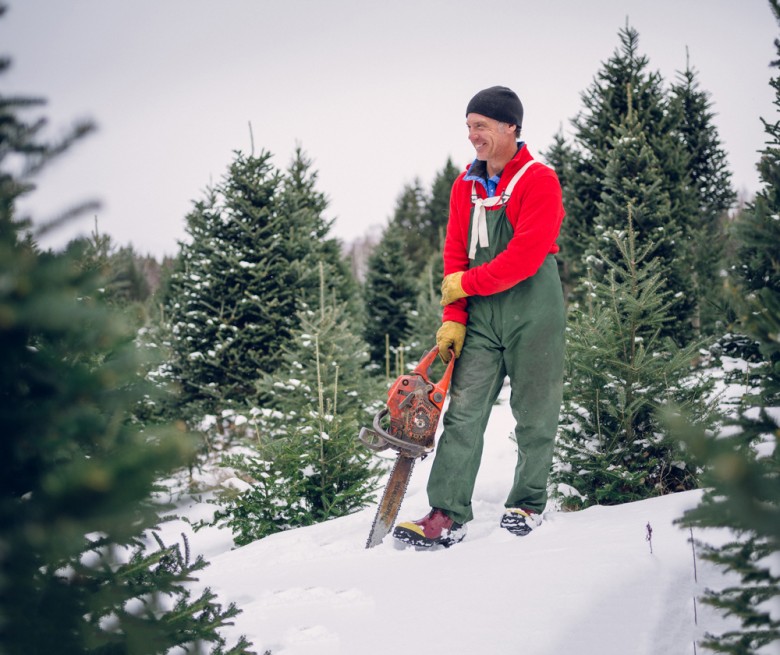The Big Question| How Can You Tell If It’s a Premium Tree?
A walk and talk with Steve Moffatt, Christmas tree grower.

Coffee By Design | Portland, Maine
Photo Credit : Katherine Keenan
Photo Credit : Corey Hendrickson
Steve Moffatt and his family live inside an orderly forest. Moffatt is a third-generation tree farmer in Craftsbury, Vermont. What began as his grandfather’s sideline to dairy farming — cutting wild conifers in old cow pastures — became his father’s full-time tree farm. Now Moffatt manages 120,000 Christmas trees on parcels of land spread out across five towns in Vermont’s Northeast Kingdom. On a crisp December day, we took a tour with Moffatt of his property and trees; here’s we heard.
—
“Dad bought the skidder in ’82. The first thing he did was cut pulp, lots of it, and then balsams just seeded in naturally. We also planted trees in rows, but for a while the forest trees did way better.”
—
“When I first started, we didn’t inventory or grade. We’d go cut trees and then realize, Oops, we got to go cut some more. Now everything’s deliberate: I’ll go out and get 220 premium 5-to-6-footers and 230 premium 7-to-8-footers, and when I get done I’ll know exactly what I’ve got.”
—
“When I took over the business from my father, the first thing I did was change the color of the ribbons we use to flag the trees. I’m colorblind, so I cannot see a red ribbon on a green tree. My school reports always said, ‘Steve needs to learn his colors.’ Now I use the blue ribbon for flagging premiums.”
—
“What a lot of people don’t realize is that June sets the pace for Christmas, grade-wise — it’s when all things go right or wrong. Native balsams have their bud break around Memorial Day. We selected these trees because their buds break two weeks later, giving them a better chance of surviving frost, insects, disease. We like to shear trees early, in July, when they’re super-soft. By September they’re sort of woody.”
—
“There’s a knack to shearing. This knife [it looks like a light-saber with a serrated blade] is specific to the industry. It also works good for watermelon. It’s called a ‘sharp shop.’”
—
“With premium trees, it’s all about the height. Everybody calls and says, ‘I want 6-to-7-footers’ or ‘I want 7-to-8-footers.” Greenwich [Connecticut] only wants premium. But Shelburne [Vermont], they’ll take anything, as long as it’s big. This tree here would be pretty, but it’s got a funny top. People don’t like to see a crooked top — they hate it because their eye is drawn to it.”
—
“I’m also going to put a tag on this tree, but I’ll bet someone’s going to look at this and say that it’s small. But look [he places the shaft of his loppers against the tree like a measuring stick], this lopper is six feet tall.”
—
“This batch of trees is genetically more consistent than the average batch — but when they’re all Nicole Kidman, some of them start to look homely.”
—
“See this Siamese tree — I’ll put a yellow flag on it — that’ll cut a nice tabletop [tree] out. People think a little ugly tree is cute, but they think a big ugly tree is just ugly.”
—
“The tree industry’s idea of a great tree is one that’s really dense, but when it’s decorated it’s not as pretty. Because if you’ve got decorations on a tight, dense tree, then the decorations are flopped on the outside.”
—
“Europeans have a different standard altogether — they like it kind of wild looking, they call it ‘old-fashioned,’ which means it’s not sheared.”
—
“Typically every tree has a weak side; they’re solar collectors, so they’re going to put their best side facing the sun.”
—
“These trees here were planted in 2010. I think in terms of tree rotations — in other words, 10 years. So the other night, as I was planning the next tree rotation, I realized when it’s time to harvest them, I’ll be 60!”
—
“The Christmas tree I pick and the Christmas tree my wife, Sharon, and our boys would pick are totally different. Sharon’s not as fussy. I chose one based on size — we have a space issue, so it needs to be narrow — and ease. I like to find one that’s close to the house.”
—
“I’ll find the right one and think, Yeah, this one should die for me.”







